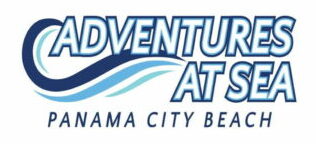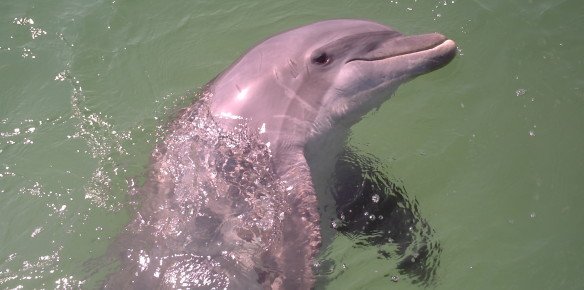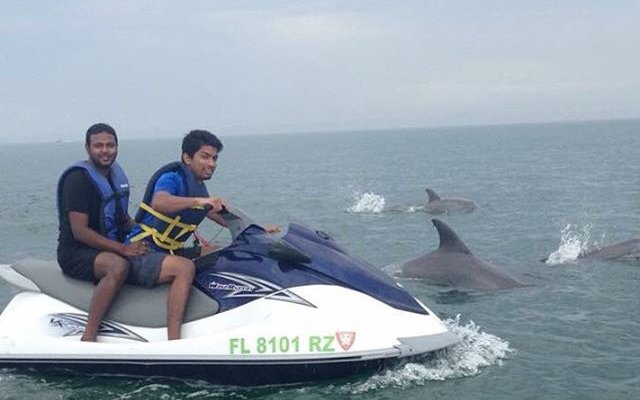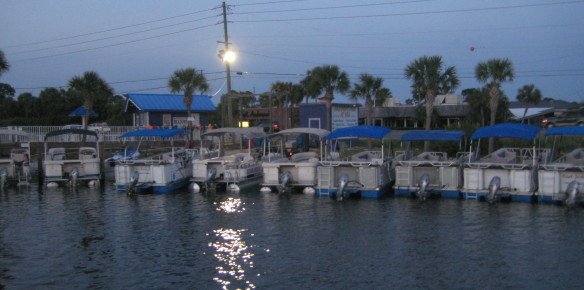Looking for a fun fall excursion? Panama City Beach has lots of exciting things to do indoors and out. We have dance clubs and live music performances, theme parks, and water sports. But Panama City Beach isn’t all about fast engines and lights and music. Did you know that the area surrounding Panama City Beach is also home to some amazing natural attractions?
Area nature preserves, rivers, and lakes offer you a chance to discover Florida’s wild side. In fact, two of the most beautiful and unusual natural habitats that Florida has to offer are within a short drive (or boat ride) of Panama City Beach. So if you’re ready to get up close and personal with nature, make plans to visit these two great natural attractions when you visit us here in Panama City Beach!
Find Florida’s Largest Coastal Dune Lake at Camp Helen State Park
Among the rarest ecosystems in Florida—and the world—are the coastal dune lakes. These freshwater lakes are found only along saltwater coastlines. It is the merger of freshwater and saltwater habitats that makes these areas so unique. One of the largest coastal dune lakes in the world is Powell Lake. This lake is part of Camp Helen State Park, located just north of Panama City Beach. Coastal dune lakes can only be found along the Florida coast of the Gulf of Mexico, and the coasts of Madagascar, Australia and New Zealand.
Along with seeing one of the only habitats of its kind in the Western Hemisphere, visitors to Camp Helen State Park can also enjoy birding, fishing, hiking, and viewing the areas unique wildlife.
See a Pristine Preserve on Shell Island
Even though it is popular with tourists, Shell Island has been left in a completely natural state. There are no restrooms, trash containers, picnic tables, or buildings on Shell Island. So when you visit, plan to take what you need with you. You’ll also need to take everything you bring to Shell Island away with you when you leave. What Shell Island lacks in modern convenience, it makes up for in natural beauty.
Along the shores of Shell Island you can expect to see ghost crabs and shore birds. You may also see manatees and rays in the clear shallow waters offshore. Dolphins sometime play nearby as well. Shell Island is surrounded by grass beds that serve as a nursery for many marine species. Horseshoe crabs, sea stars, sand dollars, and horse conch all call this habitat their home.
There aren’t as many sea shells to be found on Shell Island as there used to be. But shelling along the beach can still be fun. Especially after a storm, you may find conch shells and sand dollars. It is important to note that collecting both the horse conch and the sand dollar live is illegal. So leave any live creatures you find in their homes. While you’re looking for shells in the shallow waters you may also find urchins and other marine surprises.
Set Sail to Make Your Own Discoveries
Camp Helen State Park and Powell Lake are north of Panama City Beach, just a quick drive up US Hwy 98W. St. Andrews State Park and Shell Island are located south of Panama City Beach. You can reach St. Andrews by land, but Shell Island can only be reached by sea. To get there, you can rent a pontoon boat. With a full day rental you’ll have plenty of time to explore the hidden jetties and inlets of St. Andrew Bay and the Grand Lagoon.
If you’d like a guide for your journey, you can book a wave runner tour or boat cruise. Freshwater and deep sea fishing excursions are available, too. Just tell the staff of Adventures at Sea where you’d like to go and let them guide you there and back safely.
Wherever you decide to explore, we know you’ll have a wonder time discovering the natural beauty around Panama City Beach.






